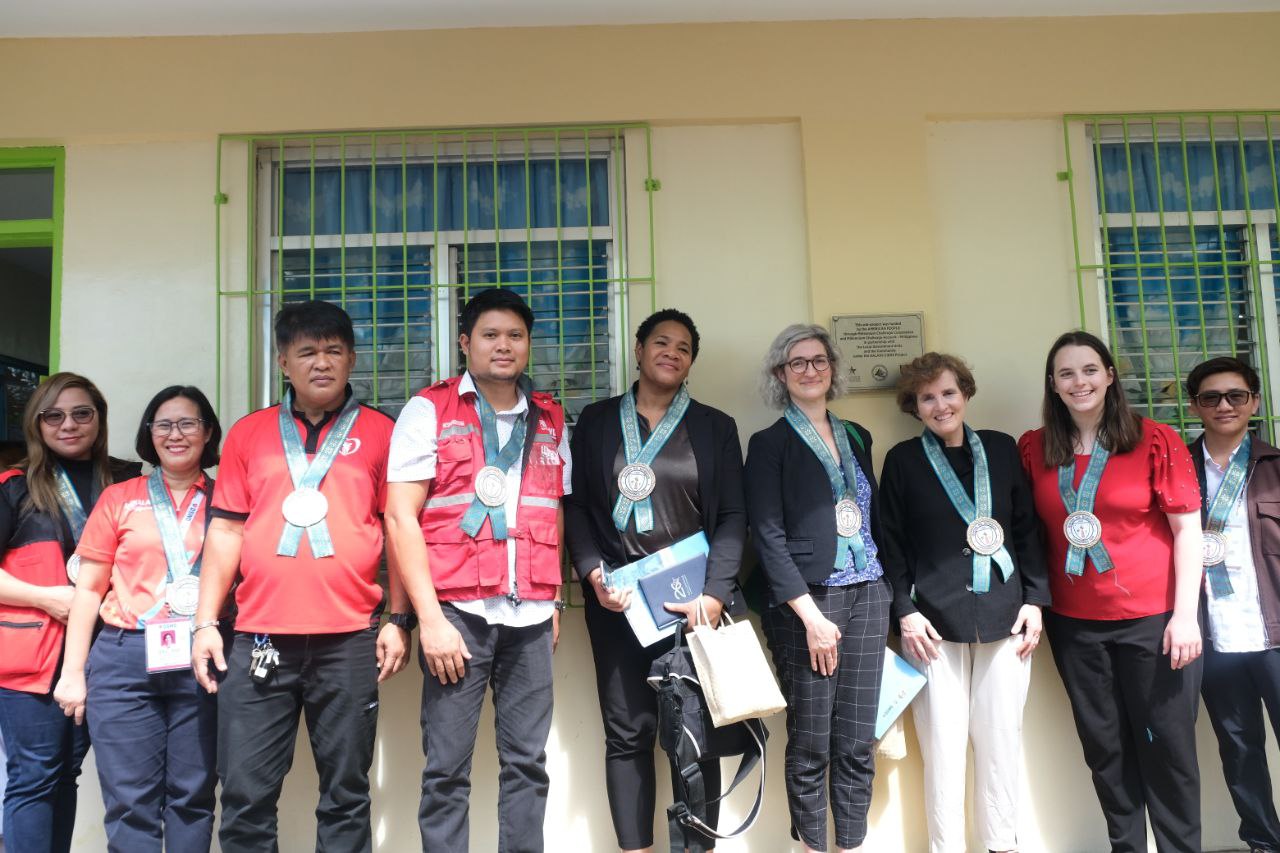
To assess the impact of Community-Driven Development (CDD), the Department of Social Welfare and Development (DSWD), Millennium Challenge Corporation (MCC) and U.S. Embassy visited the Kapit-Bisig Laban sa Kahirapan – Comprehensive and Integrated Delivery of Social Services (KALAHI-CIDSS) sub-project in San Antonio, Bombon, Camarines Sur on Wednesday (January 31).
The visit aimed at gaining insights on the transformative power of community participation in the planning and implementation processes of community-identified interventions.
Present during the visit were MCC Chief Executive Officer Alice P. Albright, Ms. Lianna Havel, Ms. Jenel Few, Ms. Sarah Olmstead, U.S. Embassy Economic Officer Tom Polhman, and Economic Specialist Alta Monica Paraiso. On the DSWD’s side were Assistant Secretary for Special Programs under Operations Group Florentino Y. Loyola, Jr., KALAHI-CIDSS Deputy National Program Manager Didith T. Bosoen, and Field Office V Regional Director Norman S. Laurio.
A focus group discussion was conducted with the community volunteers, school administration, teachers, Barangay and Municipal Local Government Units (B/MLGU) to share the outcomes of CDD, challenges and successes encountered during implementation of one (1) unit two classroom school building, and importance of community involvement in creating developmental changes.
Director Laurio highlighted the importance of community involvement in the sustainability of developmental projects.
“The continuous collaborative efforts of the communities serve as proof of the inclusive community-led development,” Regional Director Laurio said.
The school building sub-project with a project cost of PHP 1,281,001.58 was funded by DSWD KALAHI-CIDSS, MCC, and LGU which was completed in 2015 benefiting at least 60 students in sixth grade.
Rizalina R. Renton, a teacher who uses the classroom for nine (9) years, shared that the parents and school teachers facilitate the operations and maintenance of the school building to ensure that the students have access to better facilities and learning opportunities.
“Sa (for) KALAHI-CIDSS, thank you so much for this building. It is a great help to our students, to the community but we are looking forward na mag-improve pa (on the improvements) for the education among students, especially for advanced technology,” the teacher said.
KALAHI-CIDSS is a CDD program of DSWD that aims to empower communities in the planning, implementation, and management of developmental projects. ###
